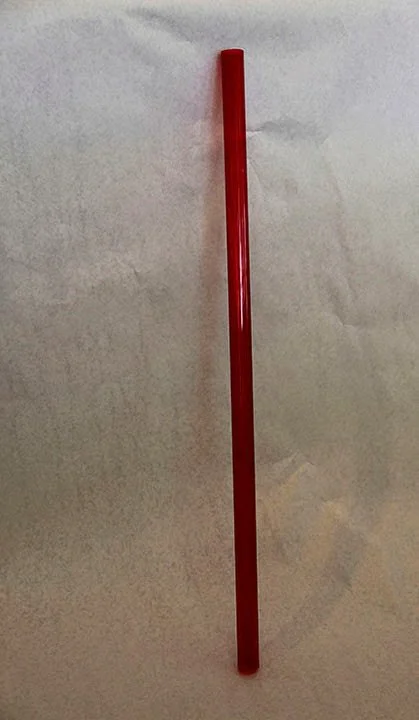Process
Process is a very important part of my work. Not only it enhances new discoveries, but it also helps me with developing further strategies. Each of my projects begins with a long period of research.
The following are some examples of my process work for the project, And the Whole World Stops:
While doing the research and developing strategies for the project, I chose to work with a transparent plastic red tube for a few weeks. From the very beginning of working with it I changed its name to "a lens", because it literally became an extension of my camera lens.
Each time I looked through the red lens, not only could I see an image in the distance, but also the residue or remnants of that image settling in on the inside of the tube; a metaphor for "the stickiness in our life" (as A. Lightman put it in his novel, Einstein's Dreams). Where one event from the past can affect and drag behind us throughout our existence, both in case of an individual, as well as nations, and thus affect our perception of the reality, our thoughts and life choices.
The series of short film studies is a result of my investigation of "the stickiness of life":
For six weeks I chose the Golden Gate Bridge as a site for my exploratory investigation of time and space for it represents to me a symbolic connection to time. The bridge, traditionally a passage of movement from point A to B, is also a great study case for investigating the notion of rhythm and repetition, elements characteristic for the concept of time. During this period I also observed the play of light, sound, vibrations, rhythms and patterns and the impact all of the above have on my own perception of time and my physical environment. My intent was to continue my exploratory investigation in that domain by collecting the visual materials from the site at different times of the day.
My experimental work and time studies were largely influenced by my interest in neuroscience, human behavior and how the brain perceives time.
At some point of my visual exploration I became very interested in the concept of the passage as a physical space where the passing of time takes place. Consequently, that led me to the idea of the layout, the structure and, when talking about the cities, the space where whole lives are contained: the grid. Even within a very small section of the grid, so many infinite variations and layers of a whole life can be contained. The grid has evolved over the course of years tremendously. Today, in the times of technological advancement, the traditional grid, has readjusted to fit and support our information-intensive environments. Besides the traditional grid cities are built on, more and more we hear about its modernized version, a smart grid. In other words, today's cities strongly rely on computerized energy, information and communications technology.
Continuing with my exploration of the phenomenon of acceleration and the impact it has on the passage of time and shifts in our perception of landscapes that make up the world around us:


